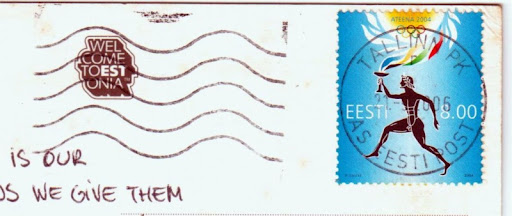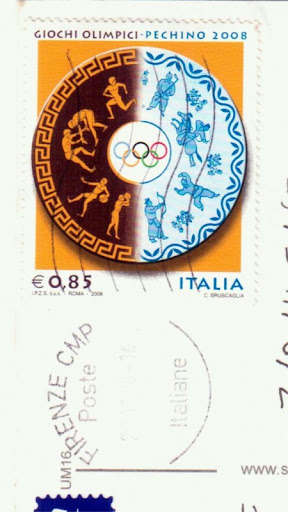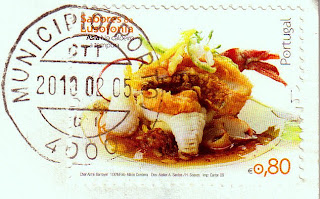This week, Sunday Stamps celebrates the Olympic spirit with two stamps that capture the essence of these global sporting spectacles.

First up, we have a piece of Estonian history. Issued in 2004 to coincide with the Athens Olympics, this stamp marks a significant milestone for Estonian athletes. After decades under Soviet rule, the Estonian Olympic Committee resumed its activity in 1989 and in the 1992 Summer Olympics in Barcelona, they were finally competing under their own flag. Can you imagine the pride and excitement of these athletes finally representing their country on the world stage? It’s a powerful symbol of independence and national pride. Since then, Estonia has certainly made its mark on the Olympic stage, with an impressive medal tally to boast – 44 medals in both the Summer and Winter Games – 14 gold, 11 silver, and 19 bronze medals. (Source)
My second stamp is Italy’s contribution to the Olympic philatelic series is a beautifully designed €0.85 stamp from 2008, part of the ‘Lo Sport Italiano’ collection.

The design merges Ancient Greek motifs with Asian (Chinese) elements. It features a disc framed in a harmonious blend of Greek and Asian borders, with the figures of athletes reminiscent of Ancient Greek pottery art on one side, and Asian athletes on the other, symbolizing the global unity of the Olympic Games. The stamp is completed with the iconic Olympic rings and the words “GIOCHI OLIMPICI-PECHINO 2008” (“BEIJING 2008 OLYMPIC GAMES”), along with the country’s name and denomination.
Italy, a country with a rich sporting heritage, has hosted the Olympics three times and has an incredible medal count. Italy boasts an impressive tally of 772 medals from both Summer and Winter Games, reflecting its rich Olympic legacy. Having hosted the Games three times, with plans for the 2026 Winter Olympics, Italy’s passion for sports is evident.
The Philippines, in other news, just made history at the Paris Olympics! Our athletes have brought home TWO GOLD MEDALS and TWO BRONZE MEDALS! It’s an absolute dream come true. This is a monumental leap for Philippine sports, especially in men’s gymnastics. Who would have thought we’d be celebrating gold medalists in this category? And our female boxers? They are fearless and their determination and grit knows no bounds! Mabuhay kayo – Carlos Yulo, Aira Villegas, at Nesthy Petecio!
These victories are a testament to the incredible talent and unwavering determination of the Filipino athletes. They’ve overcome countless challenges, including limited resources, to stand on the world’s biggest stage. I can’t wait to see these heroes celebrated with their own stamps. They deserve all the recognition and honour we can give them.


